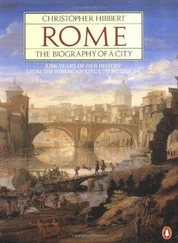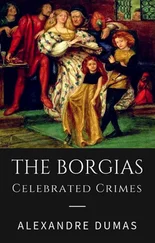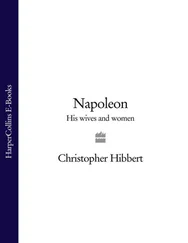The issue of crowning Alfonso II as king of Naples was discussed at length in a secret consistory that lasted eight hours; it was finally agreed that the pope’s nephew, the cardinal of Monreale, would be appointed legate to Naples and would go there to ‘anoint and crown’ Alfonso as king. Two days later Burchard himself left for Naples to make the necessary preparations; orders for the reception of the legate, for the carrying of the baldachin, the itinerary to be followed for the cardinal of Monreale’s entry into Naples, and his procession to the cathedral were all listed by the methodical master of ceremonies, together with ‘the roles of the legate and the King on the day of the coronation.’
On April 30 Burchard had an audience with Alfonso II in order to explain to him the details of the ceremony and to fix the date, which was to be May 8, chosen by the king because it was the Feast of the Ascension.
The day before the coronation, in grateful thanks to Alexander VI for his support, Alfonso II announced his gifts to the pope’s children. Cesare was given lucrative Neapolitan benefices; Juan was to get fiefs and the offer of 33,000 ducats a year to serve as a condottiere for Naples; Jofrè was given six Neapolitan fiefs, worth 4,000 ducats a year, including the prestigious title of Prince of Squillace, and the king invested him as a knight of the royal chivalric Order of the Ermine. He also ratified the marriage contract between his illegitimate daughter, Sancia of Aragon, and the twelve-year-old Jofrè, who, as Prince of Squillace, carried the crown during the coronation ceremony.
Three days later, as rain cascaded down in torrents outside, Jofrè and Sancia were married in the chapel of Castel Nuovo. After the wedding banquet, the couple were accompanied to their bedchamber, ‘where their bed had been prepared,’ reported Burchard.
The legate and the King remained waiting outside; the newly-weds were now undressed by maids-of-honour and placed together in the bed, the groom on the right of the bride. When the two, now naked, had been covered with the sheets and blanket, the legate and the King entered. In their presence, the newly-weds were uncovered by the maids-of-honour as far as the navel, or thereabouts, and the groom embraced his bride without shame. The legate and the King remained there, talking between themselves, for about half an hour before leaving the couple.
Burchard, meanwhile, had taken the opportunity to do some sightseeing around the Bay of Naples, visiting various sites of interest, including the hot springs at Pozzuoli and the sulphur and salt baths at Bagnoli, before leaving Naples with a four-year-old mule, named Idrontina, which he was given as a present by the king, together with 100 gold ducats in gratitude for services rendered.
On July 12 Alexander VI, accompanied by several cardinals, including the nineteen-year-old Cesare, left Rome for Tivoli, where he intended to stay a few days in order to escape the stifling summer heat and to attend a meeting with Alfonso II at the nearby fortress of Vicovaro, a castle belonging to Virginio Orsini, one of the condottieri captains fighting with the Neapolitan army. They discussed at length the measures that would be needed for the defence of Naples against the French. A plan of action was agreed upon; but, before it could be put into operation, an immense French army, thirty thousand strong with forty powerful cannons, under the personal command of Charles VIII, crossed the Alps in early September and started its long march south.
In Rome Alexander VI’s open alliance with Naples and Spain made life very uncomfortable for the supporters of Milan and France, not least in the college. Cardinal Giuliano della Rovere had fled to France in April; Cardinal Ascanio Sforza left at the end of June. With the plague raging, the celebrations for the anniversaries of Innocent VIII’s death and of Alexander VI’s accession were both cancelled, adding to the pall of dread that hung over the city, and which grew daily as news bulletins of Charles VIII’s slow but relentless approach were delivered. There had been a moment of hope soon after the French crossed the Alps when it was learned that Charles VIII had taken to his bed in Asti, suffering from smallpox; but the moment was brief, and the king soon recovered enough to continue on his way.
Guicciardini recorded many signs and portents of impending doom that were seen at about this time:
In Puglia one night three suns were seen in the sky, surrounded by clouds and accompanied by terrifying thunder and lightning. In the territory of Arezzo huge numbers of armed soldiers riding enormous steeds were seen for many days passing across the sky with a terrible clash of trumpets and drums. All over Italy holy images and statues were seen to sweat and everywhere monstrous babies and animals were born… whence the people were filled with unbelievable dread, frightened as they already were by the reputation of French power.
The French troops met with little opposition; it was said that they conquered Italy with the bits of chalk that the quartermasters used in order to mark the doors of the houses they occupied on their march south. Certainly the army was one of the most powerful ever assembled, and it was ‘provisioned by a large quantity of artillery,’ wrote Guicciardini, ‘of a type never before seen in Italy.’ The French had developed new weapons: ‘These were called cannon and they used iron cannonballs instead of stone, as before, and this new shot was considerably larger and heavier than that previously deployed.’ Not only were they more powerful than anything seen before; they were also more manoeuvrable; the massive cannons were transported to Italy by ship and unloaded in the harbour at Genoa, where they were loaded onto specially made gun carriages. ‘This artillery,’ concluded Guicciardini, ‘made Charles VIII’s army formidable.’
After outflanking the weak resistance of the Neapolitan forces in the Romagna and routing the Neapolitan fleet at Rapallo, they crossed the Apennines in October and seized the fortress of Sarzana, one of Florence’s key border defences. Alexander VI appointed the cardinal of Siena, Francesco Todeschini Piccolomini, as legate to Charles VIII to negotiate, but Cardinal Giuliano della Rovere, who had joined the French camp, persuaded the king not to meet him.
On November 17 Charles VIII entered Florence in triumph, to the wild cheers of the fickle populace, for whom the arrival of the French army had been the catalyst that had enabled the expulsion of the detested Piero de’ Medici, who had arrogantly exercised his authority in the city since the death of his father, Lorenzo il Magnifico, two years earlier. After signing an alliance with Florence’s new republican government on November 26, Charles VIII and his troops continued their march south, sacking and pillaging the Tuscan countryside as they went.
A few days later in Rome, Alexander VI arrested those prominent supporters of the French who remained in the city, including Cardinal Ascanio Sforza and the illegitimate son of the great Cardinal d’Estouteville, imprisoning them in apartments on the upper floor of the Vatican Palace. Though the rooms were comfortable and the prisoners were allowed to attend Mass in the Sistine Chapel, they were heavily guarded. That same day Alexander VI informed the ambassadors of France, who had come to Rome to seek free passage for the French army through the Papal States, that their request was refused. Charles VIII ignored the pope and continued to march south; a month after arriving in Florence, the invading army captured Civitavecchia, an important port inside papal territory, while the Orsini surrendered their fortress at nearby Bracciano.
Near Viterbo the vanguard of the French army, under the command of Yves d’Alègre, came across two obviously well-to-do women. One of these turned out to be Giulia Farnese, Alexander VI’s beautiful mistress, who was returning to Rome from a visit to her husband on his country estate. The other was Adriana da Mila, her friend and the pope’s cousin, who had been entrusted by him with the care of his children. A messenger was sent to the king informing him of this unexpected encounter, and Charles VIII declared that the French did not fight against women; but Yves d’Alègre saw no reason why money should not be made out of the captives who had so unexpectedly fallen into his hands, and he accordingly demanded 3,000 ducats for their release.
Читать дальше











